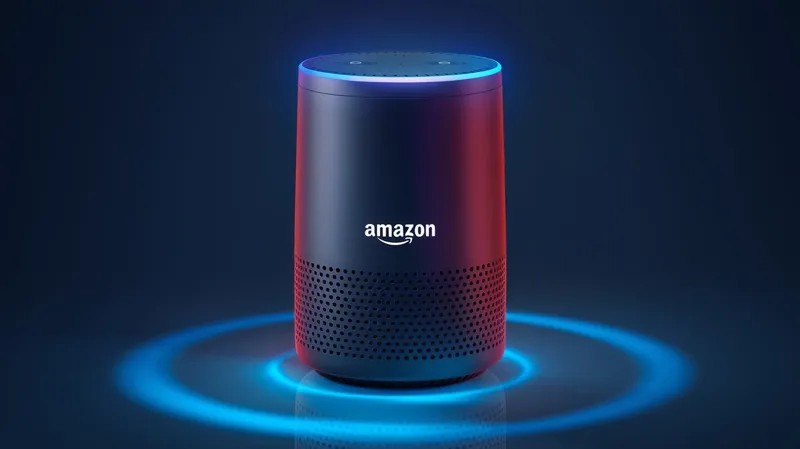The humble LED indicator has come a long way. Once a simple binary signal—a blinking green for power, a solid red for a problem—it is now undergoing a profound transformation. Fueled by advancements in artificial intelligence and edge computing, a new generation of lighting systems is emerging in consumer electronics. This isn’t just about smart bulbs you can control with your phone; this is about intelligent, context-aware lighting that anticipates your needs, communicates complex information, and fundamentally changes how we interact with our devices. This evolution, a key topic in AI Lighting Gadgets News, marks a significant shift from passive indicators to active, intelligent partners. From smartphones and smart speakers to wearables and home appliances, AI is giving light a new language, turning our gadgets into more intuitive, expressive, and integrated parts of our lives.
This article explores the burgeoning field of AI-powered lighting in consumer gadgets. We will dissect the technology that makes it possible, explore its diverse applications across various sectors, analyze its implications for user experience and device design, and provide practical insights for consumers and developers alike. As we delve into this luminous new frontier, we’ll see how it intersects with everything from Smart Home AI News to the latest in AI Phone & Mobile Devices News, creating a more cohesive and responsive technological ecosystem.
From Smart Control to AI Intuition: Redefining Intelligent Illumination
To fully appreciate the current revolution, it’s crucial to distinguish between “smart lighting” and “AI lighting.” For the past decade, smart lighting has primarily focused on connectivity and remote control. Think Philips Hue or Wyze bulbs—fantastic products that allow users to change colors, set schedules, and create scenes via a smartphone app or a voice command to an AI assistant. This was a major leap forward, but the intelligence was largely user-directed. The user had to command the change.
AI lighting represents the next paradigm shift. Instead of waiting for a command, AI-powered lighting systems are proactive and adaptive. They leverage a suite of sensors and machine learning algorithms to understand context and act autonomously. This is where the latest AI Sensors & IoT News becomes critical, as these systems rely on data from accelerometers, gyroscopes, microphones, ambient light sensors, and even cameras to make informed decisions. The processing for these decisions is increasingly happening on the device itself, a trend highlighted in AI Edge Devices News, which ensures lower latency and enhanced privacy.
The Core Components of an AI Lighting System
At its heart, an AI lighting system is a sophisticated interplay of hardware and software. Here’s a breakdown of the key components that enable this technology:
- Advanced LED Hardware: These systems use multi-zone, individually addressable RGB LEDs (or RGBIC) that can display millions of colors and complex animations, rather than a single solid color.
- Integrated Sensors: A modern smartphone or smart speaker is packed with sensors. The AI can use the microphone to sync lighting effects to music or ambient noise, the accelerometer to react to motion, and the ambient light sensor to adjust brightness and color temperature for optimal viewing and energy efficiency.
- On-Device AI Chipsets: Specialized processors or NPUs (Neural Processing Units) run machine learning models directly on the gadget. This allows for real-time analysis and response without needing to constantly send data to the cloud.
- Machine Learning Algorithms: The software is the brain of the operation. These algorithms are trained to recognize patterns, interpret sensor data, and predict user intent. For example, an algorithm might learn to associate a specific rhythmic pattern with an incoming call from a priority contact and trigger a unique lighting animation. This is a practical application discussed in AI Assistants News, where visual cues supplement auditory feedback.
Real-World Applications: Where AI Lighting Shines Brightest
The true power of AI lighting is revealed in its practical applications, which span a vast array of device categories. It’s moving beyond simple aesthetics to provide tangible functional and emotional benefits, transforming user experience in subtle and significant ways.
Enhancing Communication and Notifications

One of the most immediate applications is in reimagining notifications. Instead of a generic blinking light, AI can create a rich, prioritized visual language.
- On Smartphones: A device might use a “halo” light around its camera module to provide nuanced alerts. A slow, warm white pulse could signify a new email, while a rapid, cool blue pulse could indicate a message from a specific chat app. The AI could even learn which notifications you interact with most and create more prominent lighting effects for them, a key development in AI Phone & Mobile Devices News.
- In the Smart Home: Imagine your smart speaker, a central piece of AI Companion Devices News, glowing a gentle yellow to indicate a weather alert for pollen or a soft green when your Robotics Vacuum News has completed its cleaning cycle. This ambient information display reduces the need to constantly check your phone.
Creating Immersive and Adaptive Environments
AI lighting excels at creating dynamic, responsive ambiances that enhance entertainment and well-being. This is where it intersects with AI Audio / Speakers News and AI in Gaming Gadgets News.
- Music and Media Synchronization: Advanced algorithms can analyze audio in real-time, not just reacting to the beat but also to the melody, harmony, and mood of a song. The result is a light show that feels perfectly in sync with the music, turning a living room into a personal concert. Similarly, it can mirror the on-screen action of a movie or video game, extending the experience beyond the confines of the display.
- Circadian Rhythm Lighting: A major topic in Health & BioAI Gadgets News and AI Sleep / Wellness Gadgets News is the concept of human-centric lighting. AI systems can automatically adjust the color temperature and intensity of light throughout the day—from a cool, energizing blue-white light in the morning to a warm, relaxing amber light in the evening—to support the body’s natural sleep-wake cycle.
Boosting Safety and Accessibility
The technology also has profound implications for safety and accessibility. In the realm of Autonomous Vehicles News, exterior AI lighting on cars can communicate intent to pedestrians, such as displaying a moving pattern to show it’s about to turn. For accessibility, it offers a new channel of communication. As covered in AI for Accessibility Devices News, a smart home lighting system can flash in specific patterns to alert a hearing-impaired individual to a doorbell, a smoke alarm, or a crying baby monitored by an AI-enabled camera.
Implications and Insights: The Broader Impact on the Tech Ecosystem
The integration of AI lighting is more than just a new feature; it’s a catalyst for change across the technology landscape, influencing everything from industrial design to user privacy considerations.
A New Frontier in Device Design and User Experience
AI lighting is becoming a signature design element. It allows manufacturers to create a unique brand identity and a more emotional connection with the user. This trend is visible not just in phones but also in areas like AI in Fashion / Wearable Tech News, where smart jackets use lighting for both aesthetics and safety. The goal is to move beyond screens, creating a more ambient and less intrusive way for technology to communicate with us. This philosophy extends to a wide range of gadgets, from AI Kitchen Gadgets News, where a smart oven might use a glowing strip to indicate its heating progress, to AI Toys & Entertainment Gadgets News, where toys can react to a child’s voice and actions with expressive light patterns.
The Data Privacy and Security Conundrum

With increased intelligence comes increased data collection. For an AI lighting system to be truly context-aware, it needs to process data from its surroundings. A system that syncs to ambient conversations or uses a camera to analyze a room’s occupants raises significant privacy questions. This is a critical discussion point in AI Security Gadgets News. The push towards on-device processing via AI Edge Devices News is a direct response to these concerns. By keeping sensitive data, like audio from a microphone, on the device itself, manufacturers can offer intelligent features without compromising user privacy. Consumers must be vigilant and demand transparency in how their data is handled.
The Future Trajectory: Towards Empathetic Technology
Looking ahead, the research and prototypes emerging from labs suggest an even more integrated future. The convergence of AI lighting with Neural Interfaces News could lead to systems that respond directly to a user’s mood or cognitive state. Imagine a desk lamp that subtly brightens when its sensors detect you’re losing focus or a room that shifts to calming colors when a wearable device senses an elevated heart rate. This is the ultimate goal: technology that doesn’t just respond to commands but seems to understand and empathize with the user, a core theme in AI Personal Robots News and the development of more human-like companions.
Adopting AI Lighting: Pros, Cons, and Best Practices
As AI lighting becomes more prevalent, consumers and developers need to understand its benefits and drawbacks to make informed decisions.
Advantages and Potential Pitfalls

Pros:
- Enhanced User Experience: Provides intuitive, at-a-glance information that reduces cognitive load.
- Greater Personalization: AI learns user preferences to deliver a truly customized and unique experience.
- Improved Accessibility: Offers a vital communication channel for individuals with hearing impairments.
- Aesthetic Innovation: Unlocks new possibilities for beautiful and expressive industrial design.
Cons:
- Battery Consumption: On mobile devices like phones and wearables, complex lighting effects can significantly impact battery life.
- Potential for Distraction: If not implemented thoughtfully, constant light changes can become more distracting than helpful.
- Cost and Complexity: The advanced hardware and software can increase the cost of devices and add a layer of complexity to the user setup.
- Gimmick vs. Function: There is a fine line between a genuinely useful feature and a marketing gimmick. The long-term value depends on the utility it provides.
Tips and Considerations for Consumers
When evaluating a device with AI lighting, consider the following:
- Customization is Key: Look for robust software controls. You should be able to turn the feature off completely, customize the effects for different apps and contacts, and adjust the brightness and intensity.
- Ecosystem Integration: How well does it play with your other devices? A system that can sync with your smart home platform, gaming console, or music streaming service will provide far more value.
- Understand the “Why”: Ask yourself if the lighting feature solves a real problem or adds meaningful value to your daily routine. Is it an essential communication tool or just a novelty?
- Check the Privacy Policy: If the system uses a microphone or camera, understand what data is being collected, where it’s being processed (on-device vs. cloud), and how it’s being used.
Conclusion: Lighting the Way to a More Intuitive Future
AI-powered lighting is rapidly evolving from a niche feature into a foundational element of modern product design. It represents a move towards a more ambient, intuitive, and human-centric form of computing, where information is conveyed through subtle cues rather than demanding our full attention on a screen. As the underlying AI models become more sophisticated and the hardware becomes more efficient, we can expect to see this technology integrated into an even wider range of products, from AI Office Devices News that manage our focus to AI for Travel Gadgets News that guide us through airports. The challenge for the industry will be to ensure these features are meaningful and respectful of user privacy and attention. When done right, AI lighting doesn’t just make our gadgets look cooler; it makes them smarter, more helpful, and ultimately, more seamlessly integrated into the fabric of our lives.










